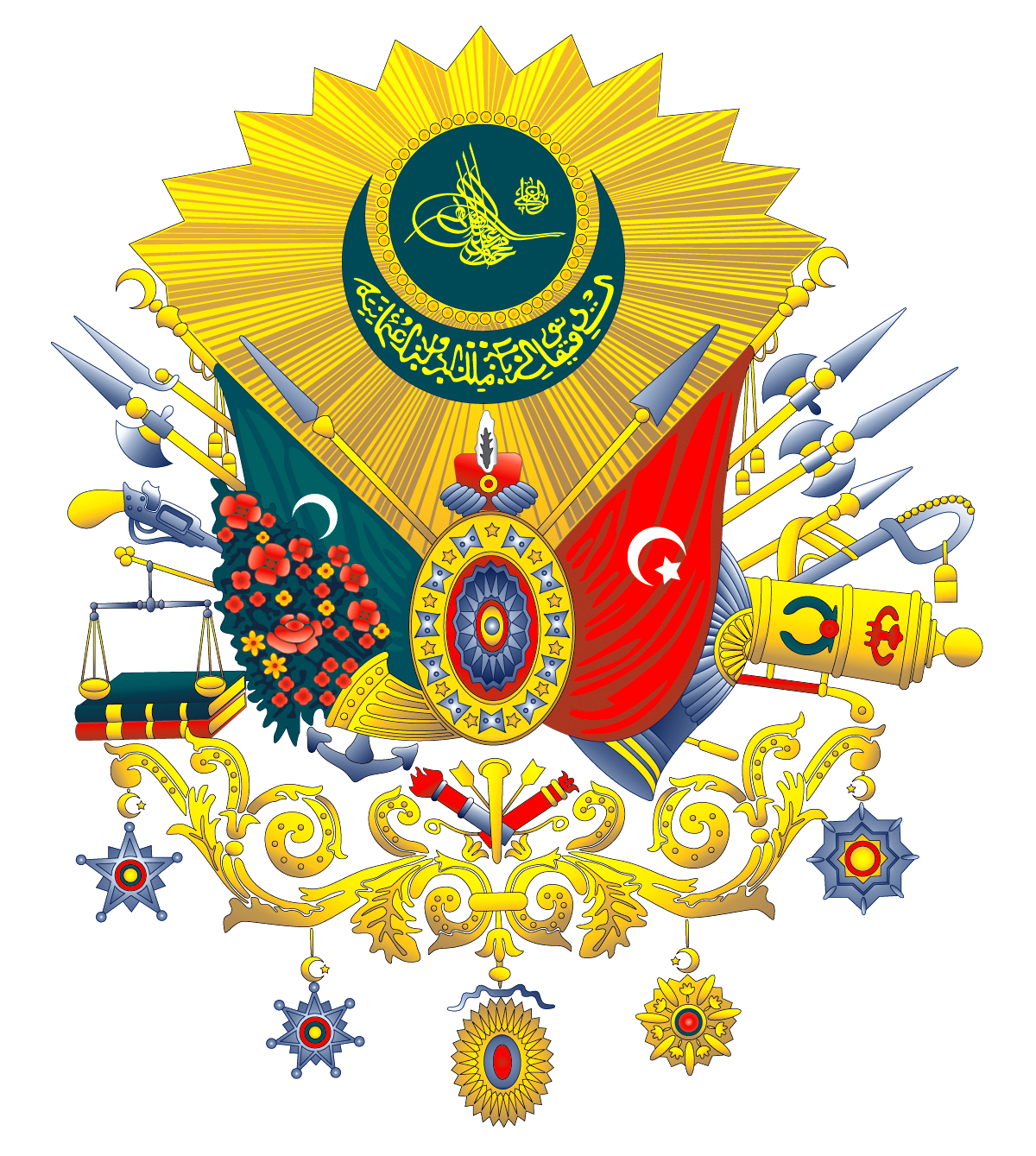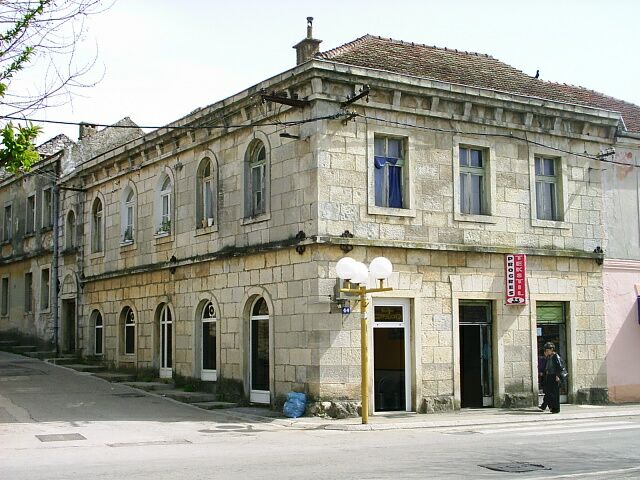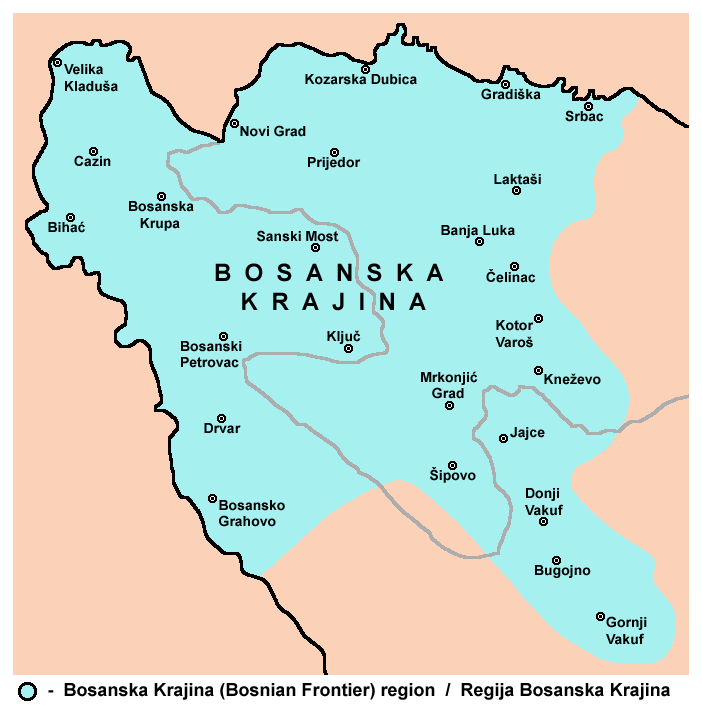|
Hasan Predojević
Hasan Predojević ( 1530 – 22 June 1593), also known as Telli Hasan Pasha ( tr, Telli Hasan Paşa), was the fifth Ottoman beylerbey ( vali) of Bosnia and a notable Ottoman Bosnian military commander, who led an invasion of the Habsburg Kingdom of Croatia during the Ottoman wars in Europe. Early life He was born Nikola Predojević into the Predojević clan, of either Serb or Vlach ethnic background, from Eastern Herzegovina. According to Muvekkit Hadžihuseinović he was born in Lušci Palanka, in the Bosanska Krajina region, however, according to his nickname ''Hersekli'', he was from Herzegovina. The birthplace has been given specifically as Bijela Rudina, Bileća. His family originated from Klobuk. An Ottoman sultan wrote in a book that he had requested from a notable lord in Herzegovina, named Predojević, that 30 small Serb children (including Predojević's only son Jovan, and his nephew Nikola) to be sent to Ottoman service (see devshirme). The very young Nikola was ... [...More Info...] [...Related Items...] OR: [Wikipedia] [Google] [Baidu] |
Lušci Palanka
Lušci Palanka is a village in the municipality of Sanski Most, Federation of Bosnia and Herzegovina, Bosnia and Herzegovina Bosnia and Herzegovina ( sh, / , ), abbreviated BiH () or B&H, sometimes called Bosnia–Herzegovina and often known informally as Bosnia, is a country at the crossroads of south and southeast Europe, located in the Balkans. Bosnia and .... Demographics According to the 2013 census, its population was 226. References Populated places in Sanski Most Villages in the Federation of Bosnia and Herzegovina {{UnaSanaCanton-geo-stub ... [...More Info...] [...Related Items...] OR: [Wikipedia] [Google] [Baidu] |
Beylerbey
''Beylerbey'' ( ota, بكلربكی, beylerbeyi, lit= bey of beys, meaning the 'commander of commanders' or 'lord of lords') was a high rank in the western Islamic world in the late Middle Ages and early modern period, from the Anatolian Seljuks and the Ilkhanids to Safavid Empire and the Ottoman Empire. Initially designating a commander-in-chief, it eventually came to be held by senior provincial governors. In Ottoman usage, where the rank survived the longest, it designated the governors-general of some of the largest and most important provinces, although in later centuries it became devalued into a mere honorific title. Its equivalents in Arabic were '' amir al-umara'', and in Persian, ''mir-i miran''. Early use The title originated with the Seljuqs, and was used in the Sultanate of Rum initially as an alternative for the Arabic title of '' malik al-umara'' ("chief of the commanders"), designating the army's commander-in-chief. Among the Mongol Ilkhanids, the tit ... [...More Info...] [...Related Items...] OR: [Wikipedia] [Google] [Baidu] |
Istanbul
) , postal_code_type = Postal code , postal_code = 34000 to 34990 , area_code = +90 212 (European side) +90 216 (Asian side) , registration_plate = 34 , blank_name_sec2 = GeoTLD , blank_info_sec2 = .ist, .istanbul , website = , blank_name = GDP (Nominal) , blank_info = 2021 , blank1_name = - Total , blank1_info = US$ 248 billion , blank2_name = - Per capita , blank2_info = US$ 15,666 , blank3_name = HDI (2019) , blank3_info = 0.846 () · 1st , timezone = TRT , utc_offset = +3 , module = , name = , government_type = Mayor–council government , governing_body = Municipal Council of Istanbul , image_shield = , established_date = 11 May 330 AD , im ... [...More Info...] [...Related Items...] OR: [Wikipedia] [Google] [Baidu] |
Devshirme
Devshirme ( ota, دوشیرمه, devşirme, collecting, usually translated as "child levy"; hy, Մանկահավաք, Mankahavak′. or "blood tax"; hbs-Latn-Cyrl, Danak u krvi, Данак у крви, mk, Данок во крв, Danok vo krv, bg, Кръвен данък, Kraven Danak.) was the Ottoman practice of forcibly recruiting soldiers and bureaucrats from among the children of their Balkan Christian subjects. Those coming from the Balkans came primarily from noble Balkan families and rayah classes. It is first mentioned in written records in 1438, but probably started earlier. It created a faction of soldiers and officials loyal to the Sultan. It counterbalanced the Turkish nobility, who sometimes opposed the Sultan. The system produced a considerable number of grand viziers from the 1400s to the 1600s. This was the second most powerful position in the Ottoman Empire, after the sultan. Initially, the grand viziers were exclusively of Turk origin, but after there we ... [...More Info...] [...Related Items...] OR: [Wikipedia] [Google] [Baidu] |
Serb National Council
sr, Српско народно вијеће , image = Serb_National_Council_Logo.gif , size = 250px , alt = , caption = SNV logo , motto = , budget = , num_staff = , num_volunteers = , formation = 1997 , extinction = , type = umbrella organization , status = elected political, advisory and coordinating umbrella organization , purpose = protection of interests of and rights of Serbs in Croatia , headquarters = Zagreb , location = , coords = , region_served = Croatia , membership = Prosvjeta Serb Democratic Forum Serbian Community of Rijeka Serbian Community of IstriaJoint Council of Municipalities Independent Democratic Serb Party Baranja Democratic Forum Association of Serbian Refugees and Expellees from Croatia Some of parishes of Serbian Orthodox Church ... [...More Info...] [...Related Items...] OR: [Wikipedia] [Google] [Baidu] |
Klobuk, Ljubuški
Klobuk is a picturesque and scenic village in the municipality of Ljubuški, Bosnia and Herzegovina, located on the western outskirts of the municipality. It partially lays alongside a section of the regional road M-6 (Grude - Ljubuški - Čapljina - Metković), with road connections to the famous Marian pilgrimage in Medjugorje and the nearest border crossing with Croatia that's some 5 km away. Klobuk has got its name from the Klobuk hill (468m), that's central to the place, whose specific shape resembles a type of hat. (Klobuk ''eng.'' hat) Klobuk has 12 hamlets that are quite scattered around - Kapel Mala, Pržine, Šiljevište, Borajna, Zastražnica, Poljane, Vlake, Čuljkova Njiva, Dabranja, Brdo, Osoje and Drače. Klobuk, namely its hamlet Šiljevište, has become increasingly popular amongst Catholic pilgrims who flock here to visit the birth place of a God's Servant, the Venerable Petar Barbaric, to worship him and pray for his intercession at this sanctuary that con ... [...More Info...] [...Related Items...] OR: [Wikipedia] [Google] [Baidu] |
Bileća
Bileća ( sr-cyrl, Билећа) is a town and municipality located in Republika Srpska, an entity of Bosnia and Herzegovina. As of 2013, the town has a population of 7,476 inhabitants, while the municipality has 10,807 inhabitants. History The first traces of civilization in Bileća date from the Neolithic period, although archaeological sites are insufficiently explored. During the Middle Ages, Bileća was located on the boundary of the župa of Vrm and the nearby Vlach necropolis was often mentioned as an important crossroad location for caravans on the way from Dubrovnik to Nikšić and Ključ, near Gacko. The town became part of the Bosnian state for the first time in 1373, after the defeat of Nikola Altomanović, but the first mention of the town under its present name is from 25 January 1387, while it appears as ''Bilechia'' in 1438. A document dated 8 September 1388 mentions that the army of the duke Vlatko Vuković defeated the Turkish army at the Battle of Bileća ... [...More Info...] [...Related Items...] OR: [Wikipedia] [Google] [Baidu] |
Bosanska Krajina
Bosanska Krajina ( sr-cyrl, Босанска Крајина, ) is a geographical region, a subregion of Bosnia, in western Bosnia and Herzegovina. It is enclosed by a number of rivers, namely the Sava (north), Glina (northwest), Vrbanja and Vrbas (east and southeast, respectively). The region is also a historic, economic and cultural entity of Bosnia and Herzegovina, famous for its natural beauties and wildlife diversity. The largest city, and its historical center is Banja Luka. Other cities and towns include Bihać, Bosanska Krupa, Bosanski Petrovac, Bosansko Grahovo, Bužim, Cazin, Drvar, Gradiška, Ključ, Kostajnica, Kozarska Dubica, Laktaši, Mrkonjić Grad, Novi Grad, Prijedor, Sanski Most, Šipovo, Velika Kladuša. Bosanska Krajina is not a formal entity within the structure of Bosnia and Herzegovina; however it has a significant cultural and historical identity that was formed through several historic and economic events. The territory of Bosanska Krajina is curr ... [...More Info...] [...Related Items...] OR: [Wikipedia] [Google] [Baidu] |
East Herzegovina
East Herzegovina ( sh-Latn-Cyrl, Istočna Hercegovina, Источна Херцеговина) is the eastern part of the historical Herzegovina region in Bosnia and Herzegovina, east of the Neretva river, part of the Republika Srpska entity. Major towns are Trebinje, Nevesinje and Bileća, predominantly inhabited by ethnic Serbs (see Serbs of Bosnia and Herzegovina). West Herzegovina is the western part, west of the Neretva river, and is today administratively part of the Herzegovina-Neretva Canton and West Herzegovina Canton, predominantly inhabited by ethnic Croats, located in the Federation of B&H entity. The easternmost parts of historical Herzegovina (the Duchy of St. Sava and Sanjak of Herzegovina) lie in Montenegro, in so-called "Old Herzegovina", which became part of the Principality of Montenegro in 1878. In 1991, local ethnic Serbs of the region declared the territory of SAO East Herzegovina independent and joined other Serb territories into Republika Srpska by 1992. T ... [...More Info...] [...Related Items...] OR: [Wikipedia] [Google] [Baidu] |
Vlachs
"Vlach" ( or ), also "Wallachian" (and many other variants), is a historical term and exonym used from the Middle Ages until the Modern Era to designate mainly Romanians but also Aromanians, Megleno-Romanians, Istro-Romanians and other Eastern Romance-speaking subgroups of Central and Eastern Europe. As a contemporary term, in the English language, the Vlachs are the Balkan Romance-speaking peoples who live south of the Danube in what are now southern Albania, Bulgaria, northern Greece, North Macedonia, and eastern Serbia as native ethnic groups, such as the Aromanians, Megleno-Romanians and the Timok Romanians. The term also became a synonym in the Balkans for the social category of shepherds, and was also used for non-Romance-speaking peoples, in recent times in the western Balkans derogatively. The term is also used to refer to the ethnographic group of Moravian Vlachs who speak a Slavic language but originate from Romanians. "Vlachs" were initially identified and d ... [...More Info...] [...Related Items...] OR: [Wikipedia] [Google] [Baidu] |
Serbs
The Serbs ( sr-Cyr, Срби, Srbi, ) are the most numerous South Slavs, South Slavic ethnic group native to the Balkans in Southeastern Europe, who share a common Serbian Cultural heritage, ancestry, Culture of Serbia, culture, History of Serbia, history and Serbian language, language. The majority of Serbs live in their nation state of Serbia, as well as in Bosnia and Herzegovina, Croatia, Montenegro, and Kosovo. They also form significant minorities in North Macedonia and Slovenia. There is a large Serb diaspora in Western Europe, and outside Europe and there are significant communities in North America and Australia. The Serbs share many cultural traits with the rest of the peoples of Southeast Europe. They are predominantly Eastern Orthodox Christians by religion. The Serbian language (a standardized version of Serbo-Croatian) is official in Serbia, co-official in Kosovo and Bosnia and Herzegovina, and is spoken by the plurality in Montenegro. Ethnology The identity ... [...More Info...] [...Related Items...] OR: [Wikipedia] [Google] [Baidu] |
Ottoman Wars In Europe
A series of military conflicts between the Ottoman Empire and various European states took place from the Late Middle Ages up through the early 20th century. The earliest conflicts began during the Byzantine–Ottoman wars, waged in Anatolia in the late 13th century before entering Europe in the mid 14th century with the Bulgarian–Ottoman wars. In the mid 15th century, the Serbian–Ottoman wars and the Albanian-Turkish wars were waged by Serbia and Albania respectively against the Ottoman Turks. Much of this period was characterized by Ottoman expansion into the Balkans. The Ottoman Empire made further inroads into Central Europe in the 15th and 16th centuries, culminating in the peak of Ottoman territorial claims in Europe. The Ottoman–Venetian wars spanned four centuries, starting in 1423 and lasting until 1718. This period witnessed the fall of Negroponte in 1470, the fall of Famagusta (Cyprus) in 1571, the defeat of the Ottoman fleet at the Battle of Lepanto in 1 ... [...More Info...] [...Related Items...] OR: [Wikipedia] [Google] [Baidu] |


.png)





